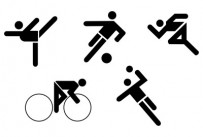What is Regional Interdependence?

What is Regional Interdependence?
Written by: Paul Kochoa, PT, DPT, OCS, CKTP, CGFI
In a case study published in the Orthopedic Physical Therapy Practice journal, a 62 year-old man complained of shoulder pain.¹ The case study detailed this patient and his results with physical therapy. He couldn’t lift his arm more than 30 degrees, had chronic tears in his rotator cuff, and multiple bouts of previous attempts at physical therapy. When the authors saw him, they performed a Selective Functional Movement Assessment on him. They not only looked at his shoulder, but also his trunk, hips, legs, balance and strength. They found that the patient had multiple movement dysfunctions throughout his body, not just his shoulder. His treatment focused on postural control and balance in order to increase his shoulder function. Sound unrelated? That’s regional interdependence.
In my previous posts, Stairs and knee problems and The ankle and the step down test, I wrote how the hip and ankle are related to knee joint problems. This study takes this relationship further. The body’s segments rarely function independently of one another, one is connected to another: stability and mobility, strength and flexibility. Take for example your shoulder. Let’s say you have pain, and you can’t raise your arm over your head, similar to the patient in the case study. Standing up, you try and raise your arm, as soon as you try and move it, shooting pain comes from your shoulder joint and you stop, dropping your arm down to your side. Now, in the same standing position, bend forward and touch your toes. What happened? You bent forward to touch your toes. So what? Look at the position of your arm when you’re down there touching your toes. See how your arm is now positioned relative to your trunk. This is an example of one of the interventions they used in the case study.
The authors worked on the patients ability to stand on one leg and his stability through his trunk. They found that raising the arm required stabilization of his upper back muscles and his legs to balance his body. Raising your arm overhead raises your center of gravity and challenges your balance; and the upper back muscles have to stabilize and work in conjunction with the shoulder blade in order to functionally use the arm.
Remember that the body functions as a unit. Don’t be alarmed when your physiotherapist tells you to do a squat when you’re getting treated for shoulder pain, it’s all about regional interdependence.
If you would like more information, please call Professional Physical Therapy and Training at 973-270-7417. Our offices our located within the YMCA locations in Madison and Summit, NJ. You do not need to be a member of the YMCA to visit with us.
1. Boyland DA, Lowe J. The influence of balance and postural control on shoulder function in a patient with chronic rotator cuff pathology. Ortho Prac. Vol 23:1:11,14-19. Image courtesy of Salvatore Vuono / FreeDigitalPhotos.net